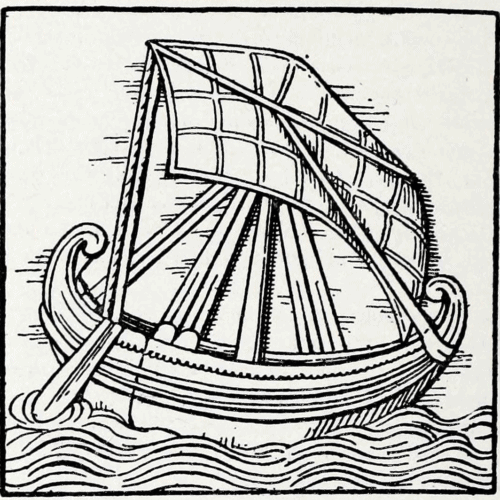Romans activity 9: a dangerous voyage
Children investigate how Samian ware pottery, amphorae containing wine or olive oil, marble, spices and other luxury goods were imported into Roman Britain and where in the Empire they came from.
They explore what Roman merchant ships looked like, how they stored the cargo, navigated across the seas, and discover the dangers associated with any sea voyage… from pirates, to storms and shipwreck.
Based on this research and inspired by imported artefacts discovered at Folkestone Roman Villa they develop a piece of poetry, creative writing or a short animation telling the tale of a perilous voyage.
Learning objectives
Increased knowledge and understanding of archaeology and Folkestone Roman Villa.
Knowledge of the wider Roman world and trade across the Roman Empire.
Research skills.
Creative writing and/or animation skills.
Curriculum links
KS1-2 History (Romans, Local History Study).
KS1-2 English (creative writing, poetry)
KS1-4 ICT (the animated story of a Roman pot or other artefact from Folkestone Roman Villa).
Explore the Learn with Objects Romans topic to discover which artefacts at Folkestone Roman Villa were imported and from where. Make a map of where they came from (alternatively, you can mark locations on a printed map).
- Which artefacts came the furthest?
- How did they get here?
Imagine the voyage.
- Which islands and landmarks did you pass?
- The Pharos of Alexandria, Portus the great port of Rome, the Pillars of Hercules, the stormy Bay of Biscay, the White Cliffs of Britannia?
- What sea creatures did you see?
Look at other examples of creative writing about dangerous voyages and objects brought from across the seas.
Watch the animation of Marcus and the Mystery of the Pudding Pans for inspiration.
https://cotswoldarchaeology.co.uk/marcus-the-mystery-of-the-pudding-pans/
Creative writing: The Voyage of the Perilous Pot
Children develop a piece of poetry or creative writing telling the tale of a precious item of cargo (perhaps an artefact from Folkestone Roman Villa) brought across the seas to Roman Britain.
- What’s its story?
- How did it get here?
- Where was it made?
- Does it make it to the villa, after its perilous voyage?
- If not, what is its fate?

